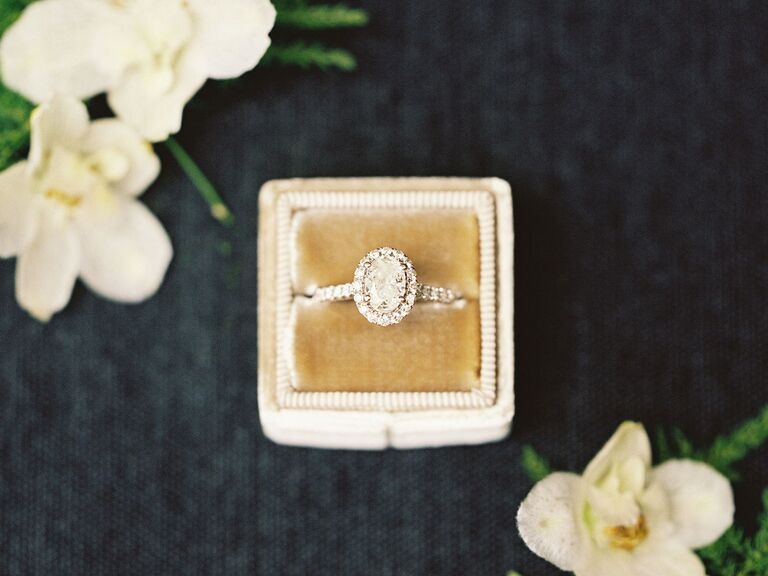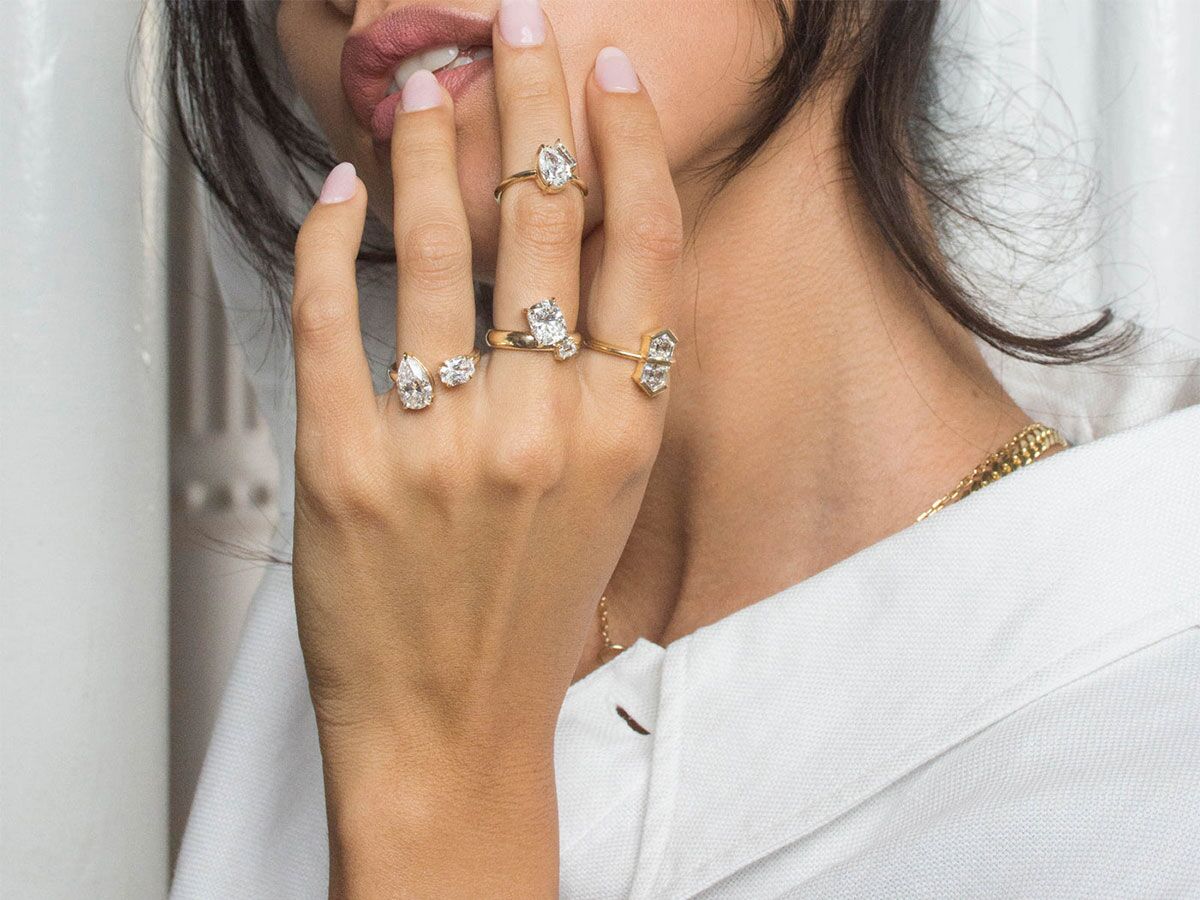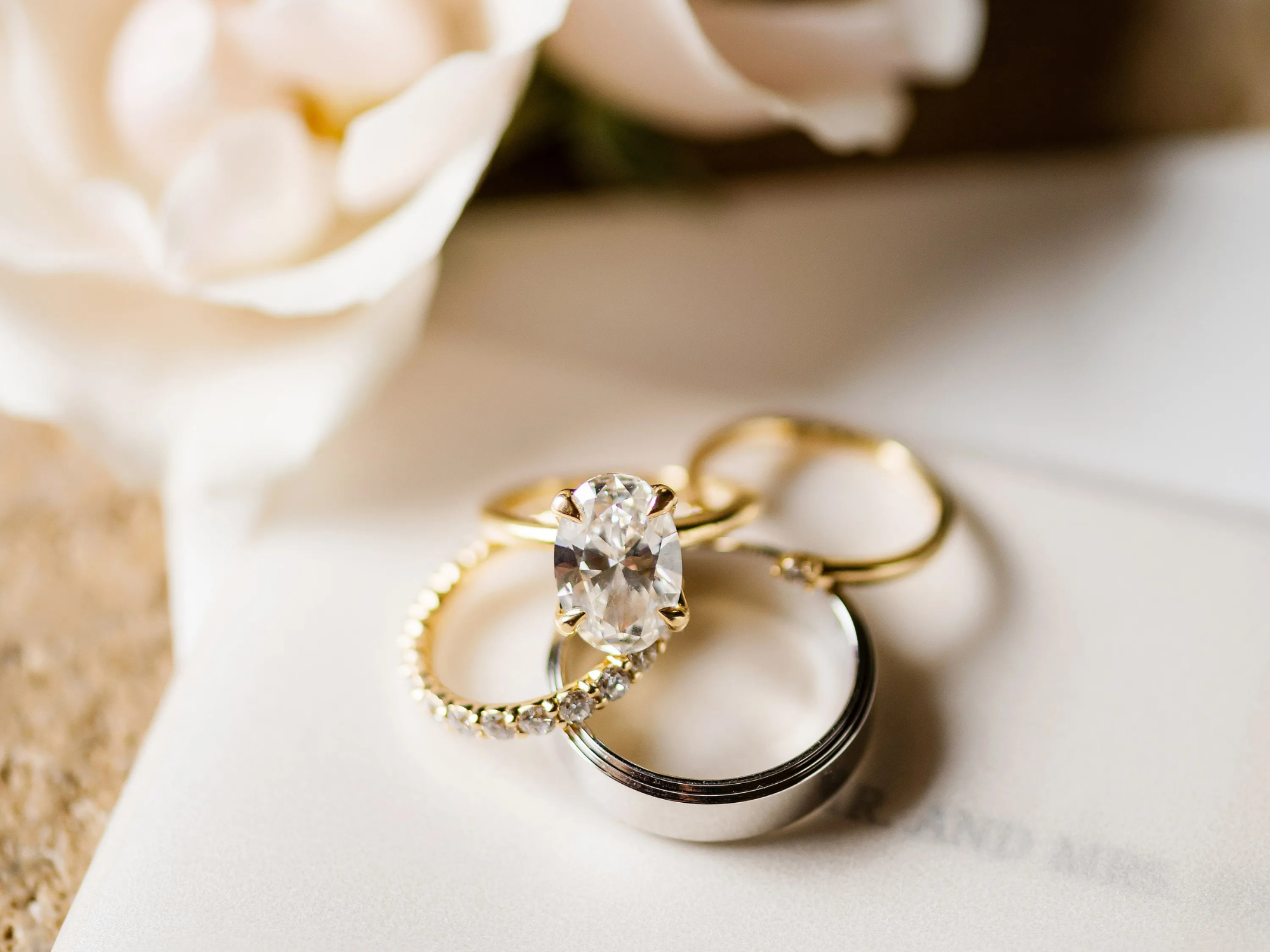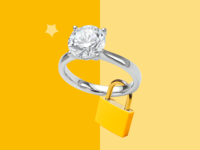The 4 Common Causes for a Damaged Engagement Ring and How to Fix and Prevent Them
If you're dealing with a damaged engagement ring, don't fret, you've come to the right place. While it may seem like the end of the world at the moment, many types of engagement ring damage are actually very common and oftentimes can be easily fixed. Your jeweler can work with you to repair any existing damage on your engagement ring and can offer advice on how to prevent damage, depending on your ring type. The Knot Vendor Marketplace is a great resource to find trusted local jewelers.
Knowing how to properly take care of your engagement ring is an important step in maintaining its look for years to come. We spoke with Michelle Berlinger, designer and owner of Berlinger, about the most common types of engagement ring damage, how to fix them and proactive measures you can take to prevent ring damage in the first place.
In this article:
- Can Engagement Rings Get Damaged Easily?
- 4 Common Types of Engagement Ring Damage
- How to Prevent Engagement Ring Damage
Can Engagement Rings Get Damaged Easily?
Yes, it's possible to damage your engagement ring with everyday wear and tear or if you are not paying careful attention to the ring's care instructions. But don't worry—there are easy ways to protect your engagement ring from damage as well as ways to fix a damaged engagement ring.
4 Common Types of Engagement Ring Damage
While normal wear and tear is to be expected on your engagement ring—especially if you wear it every day—there are other types of ring damage that can commonly occur. From diamond chips to bent prongs, below we walk you through the four most common kinds of engagement ring damage and how you can fix them. (P.S. Repairs may even be covered by engagement ring insurance if you have it!)
Out of Round
Did you know that over time your ring can actually lose its shape and mold to your finger? "What we see most are rings becoming 'out of round' so the roundness of the ring actually starts to mold to the shape of your finger (which is not round!)," Berlinger tells us. "If you hit the ring a lot throughout the day or are gripping things a lot or have a softer metal like 18k or platinum the ring roundness can change."
How to fix it: Your jeweler can use a special ring mandrel to bring your ring back into a round shape. This cone-shaped tool will use gentle pressure to mold the ring. Depending on the severity of the damage, they may also use a jewelry hammer.
Bent Prongs
Everyday wear and tear can loosen or bend the prongs on your ring over time.
Berlinger says, "This can happen if your ring is high set and the prongs catch on things—this repeated action can cause a prong to bend backward and loosen the center stone."
While this may seem scary, it's easy to test your ring for bent prongs before they become worse. Berlnger encourages her clients to do what she calls the "tap test" at least once a year to check for loose or bent prongs. "If you grip the band of the ring with your thumb and pointer finger and tap it lightly, you will actually be able to hear if your center stone is loose and rattling around," she shares. "This is a very very easy way to catch this early and a check you can do yourself."
How to fix it: The good news is that bent prongs on an engagement ring are a very easy fix. You can take the ring to your jeweler and they will carefully mold the prongs back into place without damaging the stone. Although this may seem simple, we encourage you to leave it to the professionals and not attempt to fix your bent prongs at home, as you could damage the gemstone or the prongs themselves.
Diamond Chips
While they have excellent strength and durability, diamonds can chip if not cared for properly. Certain shaped diamonds, such as marquise or princess cut, are more susceptible to this kind of damage due to their sharp corners. Harsh impact can cause chips, so we recommend taking off your ring for any strenuous activities.
How to fix it: While the diamond chip can not be reattached to the original stone, your jeweler can polish or recut the diamond to return it to its original look. In minor chips, this can be done while maintaining the original look of the diamond, but a more severe chipped diamond may call for the stone to be entirely recut.
Ring Scratches
Scratches on a wedding band are one of the most common types of damage and are expected with everyday wear. The type of metal you choose can determine the likelihood of scratches. Platinum and 18k gold are the most durable and thus the least prone to scratches, while metals like 9k gold are more prone to scratches.
How to fix it: A jeweler can polish or even re-plate your ring to hide the look of scratches, although sometimes they can not be 100% removed. We recommend using a soft polishing cloth on your ring every once in a while to keep it looking its best.
How to Prevent Engagement Ring Damage
Taking preventative actions can save you from ring damage. "The better you take care of your ring the longer you will be able to go without any repairs or fixes on the ring," Berlinger says.
Take Off Your Ring for Strenuous Activity
The easiest way to prevent engagement ring damage is to take off your ring during activities that are more likely to cause damage. Berlinger advises, "Take off your ring, even if it is a diamond ring, when you plan to do strenuous activity with your hands—this means things like exercise, cooking, heavy-duty cleaning, moving, etc."
If you're worried about losing your ring, investing in a ring storage pouch or engagement ring box to keep it in when not being worn is a good way to keep it safe and secure. Keeping a chic ring dish next to your sink will remind you to take it off when washing the dishes. You could even loop it onto a necklace, as Berlinger suggests. "There are a lot of solutions to keep your ring close to your heart—a lot of our clients opt for a simple chain or necklace to string the ring on when they are doing these things so they can still wear their ring, just avoid damage."
Pay Attention to Care Instructions
Every ring is different and will come with its own set of care instructions depending on the metal type, gemstone and setting, which should be communicated from the beginning by your jeweler. "If they didn't give them to you and your ring does not have a diamond I definitely recommend asking for care instructions," Berlinger suggests.
Specific ring types will have tailored care instructions. "For example, if you have an engagement ring with an alternative stone (i.e. not diamond), your ring will likely require additional special care," Berlinger explains. "Emeralds for example should not be exposed to excessive heat (that can even mean hot water from the shower) or they can crack. Stones like opal and turquoise are soft and porous and will absorb the materials put on them like lotion or other solvents and change or lose color."
Regular Cleaning
Regularly cleaning your ring, both at home and professionally, will help it maintain its look for years to come. You can use a soft cloth and warm soapy water at home or even a jewelry cleaning solution to quickly clean your engagement ring at home. You may also want to consider periodically going to a jeweler for a professional cleaning, where they can remove any deeply set in dirt or grime.
























